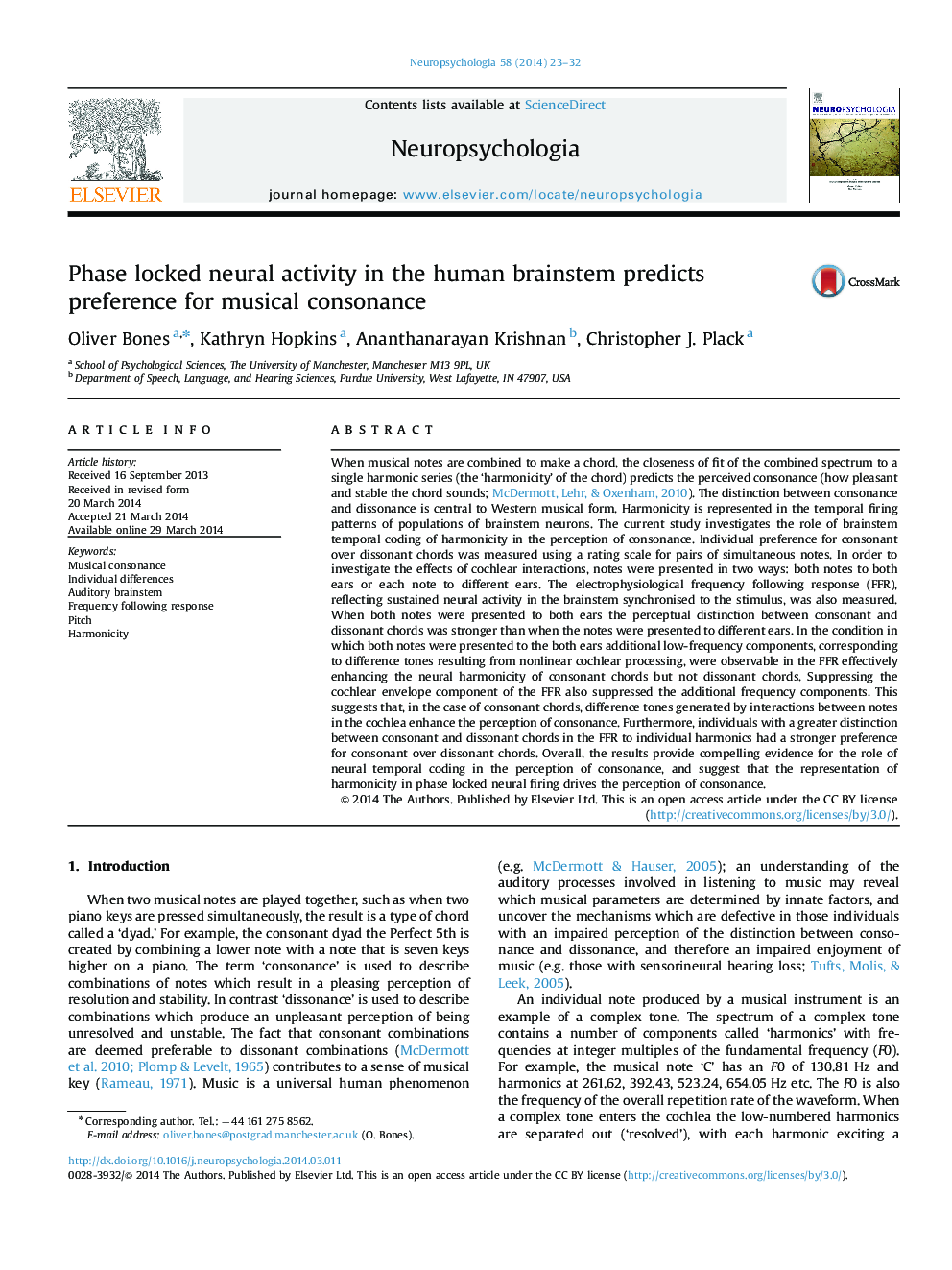| کد مقاله | کد نشریه | سال انتشار | مقاله انگلیسی | نسخه تمام متن |
|---|---|---|---|---|
| 7321353 | 1475595 | 2014 | 10 صفحه PDF | دانلود رایگان |
عنوان انگلیسی مقاله ISI
Phase locked neural activity in the human brainstem predicts preference for musical consonance
ترجمه فارسی عنوان
فعالیت عصبی قفل شده فاز در مغز انسان پیش بینی کننده ترجیح به همخونی موسیقی است
دانلود مقاله + سفارش ترجمه
دانلود مقاله ISI انگلیسی
رایگان برای ایرانیان
کلمات کلیدی
هماهنگی موسیقی، تفاوتهای فردی، مغز گوش شنوائی، پاسخ فرکانسی زیر، گام صدا، هماهنگی،
موضوعات مرتبط
علوم زیستی و بیوفناوری
علم عصب شناسی
علوم اعصاب رفتاری
چکیده انگلیسی
When musical notes are combined to make a chord, the closeness of fit of the combined spectrum to a single harmonic series (the 'harmonicity' of the chord) predicts the perceived consonance (how pleasant and stable the chord sounds; McDermott, Lehr, & Oxenham, 2010). The distinction between consonance and dissonance is central to Western musical form. Harmonicity is represented in the temporal firing patterns of populations of brainstem neurons. The current study investigates the role of brainstem temporal coding of harmonicity in the perception of consonance. Individual preference for consonant over dissonant chords was measured using a rating scale for pairs of simultaneous notes. In order to investigate the effects of cochlear interactions, notes were presented in two ways: both notes to both ears or each note to different ears. The electrophysiological frequency following response (FFR), reflecting sustained neural activity in the brainstem synchronised to the stimulus, was also measured. When both notes were presented to both ears the perceptual distinction between consonant and dissonant chords was stronger than when the notes were presented to different ears. In the condition in which both notes were presented to the both ears additional low-frequency components, corresponding to difference tones resulting from nonlinear cochlear processing, were observable in the FFR effectively enhancing the neural harmonicity of consonant chords but not dissonant chords. Suppressing the cochlear envelope component of the FFR also suppressed the additional frequency components. This suggests that, in the case of consonant chords, difference tones generated by interactions between notes in the cochlea enhance the perception of consonance. Furthermore, individuals with a greater distinction between consonant and dissonant chords in the FFR to individual harmonics had a stronger preference for consonant over dissonant chords. Overall, the results provide compelling evidence for the role of neural temporal coding in the perception of consonance, and suggest that the representation of harmonicity in phase locked neural firing drives the perception of consonance.
ناشر
Database: Elsevier - ScienceDirect (ساینس دایرکت)
Journal: Neuropsychologia - Volume 58, May 2014, Pages 23-32
Journal: Neuropsychologia - Volume 58, May 2014, Pages 23-32
نویسندگان
Oliver Bones, Kathryn Hopkins, Ananthanarayan Krishnan, Christopher J. Plack,
